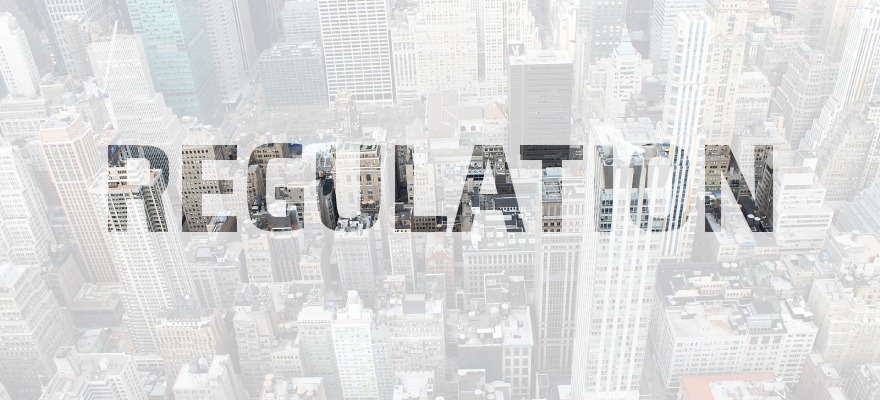This guest article was written by Akber Datoo and Paul Watkins. Akber Datoo is the founder and managing partner of D2 Legal Technology, Paul Watkins is a consultant for D2 Legal Technology.
As the market moves towards a new model that demands that vanilla OTC interest rate swaps must now be cleared through a Central CounterParty (CCP) – starting April 2016 and becoming standard procedure for major clients in the period up to late 2018 – the implications of the change have been creating waves.
In terms of client protection, the primary aim of EMIR is to provide for the “porting” of client positions and collateral away from a defaulting clearer to a non-defaulter. The secondary aim, where porting is not possible, is to enable assets to be returned to clients upon the clearer’s insolvency, so clients can avoid the lengthy process that enveloped them at Lehmans.
Market Complexity
However, the complexity associated with achieving these aims is significant. Many had expected the regulations mandating OTC clearing to result in the creation of a new profit centre - but now that looks less likely, with the demands of client segregation and portability not only adding cost to trading but also undermining client relationships.
As the market has been absorbing the implications, a number of large institutions, including Nomura, have left the market – and it is expected that just a handful of OTC client clearers will remain by the time mandatory OTC clearing comes fully into force. This may result in there being more clearing houses than clearing members for OTC derivatives, which may result in the latter (also) being treated as part of the Financial Markets Infrastructure - particularly as Regulation is forcing clients to use their

Paul Watkins
services.
Those that are deciding to stay in the market are becoming more selective about which clients they will do business with. The de-netting of collateral has removed one of the biggest drivers for clearers to increase their client base.
Omnibus Accounts
The gold standard for segregation offered by EMIR, the ISA account, has, according to the European Securities and Markets Authority (ESMA), had minimal take-up. ESMA also comments that another alternative provided by EMIR, that of indirect clearing for OTC products, has not been offered at all. What this means is that the vast majority of business will be done through omnibus accounts, the historical norm for futures business.
The primary goal of EMIR, porting, will only be achieved under an omnibus account if all of the underlying clients can agree on a single back-up clearer, which will normally be unlikely. Upon a default, those clients who are not ported will have their positions liquidated by the CCP, and any excess collateral will be returned direct to the client, if known to the CCP, otherwise to the defaulter’s administrator.
In this latter case, clients will want to be confident that the administrator will promptly make them good - EMIR will have achieved little if most client business ends up being tied up with the administrators, like it was at Lehmans.

Akber Datoo
Contract Negotiations
With the proposed EMIR 2 Regulation, the requirements are set to become more granular. For the OTC clearers that do decide to stay in the market, there will be close regulatory scrutiny, in particular to monitor any impediments to the take-up of accounts.
The contractual arrangements underpinning the account segregation will be negotiated between client and clearing member. In most cases they will be based on the industry standards - the ISDA/FOA Client Cleared OTC Derivatives Addendum, or the FOA Clearing Module. The terms of these documents are highly complex, and their negotiation is likely to require significant legal advice. Where the clearers provide bespoke contracts instead of using these models, navigating them will be even more difficult, with the following aspects requiring thorough consideration:
- Right of use
- Title Transfer or Security Interest
- Client Money Sub-pool
- Porting Commitments
- Trading Limits
- Margin Caps
- Collateral Transformation/Return
- Fees
Clients will want to ensure the terms are clearly recorded, to make it more likely that the administrators will make them good promptly (without having to take legal advice), and allow them to continue in business - for ultimately the administrators will be the real consumer of the information which is being documented in the client clearing agreement.
Conclusion
There is a large investment being made by clearing houses, clearing members and clients – and the new client cost model has yet to be fully determined, in part because there is no way as yet to predict the level of charges which participants will accept at each link in the clearing chain. The final business model is unlikely to be clear until long after the EMIR provisions are fully implemented.
The uncertainties around OTC client clearing, when taken together with the BCBS/IOSCO requirements on OTC margining, may make the provision of a workable model for swap futures a panacea. For these “futurised” swaps, clients should be able to continue to use their current agreement for futures and options clearing (with a clearer from a broader pool than those who offer OTC clearing), which document how collateral is treated today, with the only changes being to specify how EMIR will impact the clearer’s provision of the omnibus account.






















